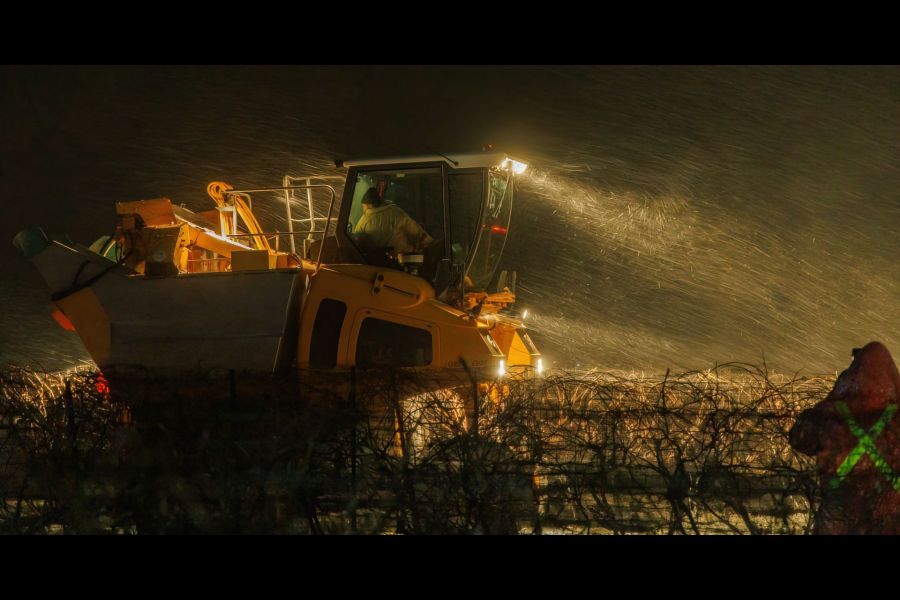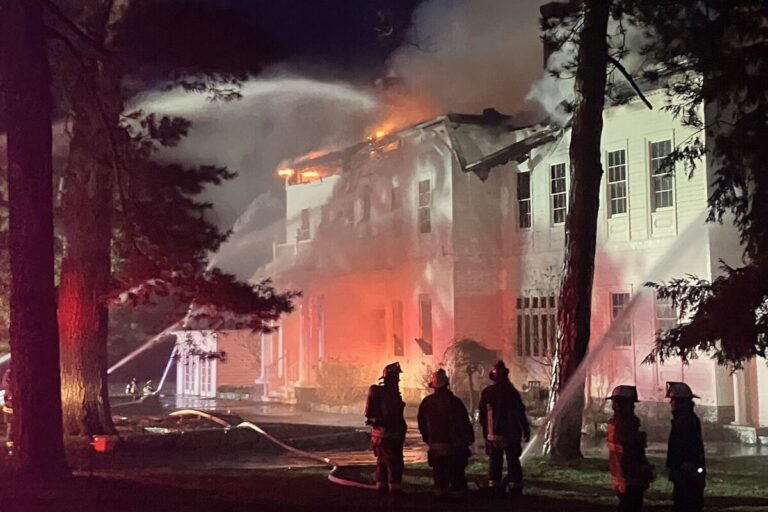When the temperature plunges to -15C overnight, most of us snuggle deeper into our duvets.
But grape growers and winemakers bundle up and brave the bitter cold to harvest precious grapes for making icewine.
And that’s exactly where they were in the wee hours of Tuesday morning this week.
The windchill made it -21C, but those who work in the NIagara wine industry have to be hardy.
Regulations require the temperature to be at least -8C, or colder, before grapes can be picked for icewine.
According to Matthias Oppenlaender, the chair of Grape Growers of Ontario, just about everyone is finished harvesting now.
Grower Curtis Wiley and some others picked Vidal grapes a week earlier, on Jan. 3, overnight into Jan. 4, when the temperature dropped to -10C.
And this Monday night into Tuesday morning, “there were a lot of people out picking,” said Oppenlaender, adding, “It’s a real relief, a really, really good feeling when you’re done and you can relax a little.”
With the polar vortex settling over the province and bringing frigid temperatures to Niagara, harvesters at Pillitteri Estates Winery in Virgil were among those who were out Monday night.
“Some years are colder than others. The last few harvests were right on that -8C to -9C cusp but this year was a bitterly cold one,” said Jamie Slingerland, Pillitteri's director of viniculture.
Their harvest continued into the morning, for 16 straight, chilly hours.
Also at Pillitteri this year, members of the Niagara Falls Camera Club were on hand to document the harvest.
Club member Ron Planche noted, “The icewine industry forms an important part of the economic strength of the Niagara economy. Our members are very interested in giving visual strength to this industry. The fact that harvesting icewine happens in the dark is an excellent challenge to our club members."
The photographers also had the chance to see the pressing of grapes at the winery and photograph the first batch of grapes as they were squeezed through the traditional basket presses.
Last year harvest conditions didn’t arrive until February, which is later than usual.
This time of year is ideal, said Oppenlaender, explaining that the longer the grapes stay on the vines, the more are lost to birds and other pests. “We all see the huge flocks of starlings and the icewine grapes are ideal food for them.”
In it’s 2021 Vintage Report, VQA Ontario reported that growers had reserved 1,952 tonnes of grapes for this year’s harvest, which is almost double last year’s record low of 1,068 tonnes, though still well below previous years (in 2019 it was 5,789 tonnes).
The drop in the volume of grapes reserved for icewine is because of lower international sales of icewine since the pandemic began.










